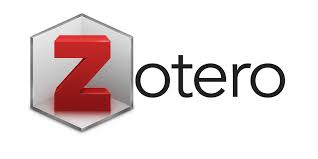Pengembangan Modul Transformasi Berbasis CORE (Connecting, Organizing, Reflecting, Extending)
DOI:
https://doi.org/10.29240/ja.v2i2.1742Keywords:
Development, Modules, COREAbstract
This study aims to produce teaching materials in the form of CORE-based modules on geometry transformation materials and to determine the responses of students, educators to the modules developed and to determine the effectiveness of CORE-based modules on geometry transformation material. This research method is Research and Development (R&D) using the ADDIE model which consists of the stages Analysis, Design, Development, Implementation, Evaluation. Based on the result of the validation of the material expert and the module media are stated with the “proper†criteria. Student responses on a small scale and large scale (field), as well as educator responses to modules with criteria of attractiviness aspects “very interestingâ€. While the responses of educators to the modules developed obtained an average score of 4,42 with the criteria of attractiveness aspects “very interestingâ€. The results of the assessment of the effectiveness test obtained an N-Gain score of 0,694 with “moderate†qualifications. So teaching material in the form of CORE-based mathematics learning modules (Connecting, Organizing, Reflecting, Extending) on geometry transformation material is declared feasible, interesting, and effective to be used as teaching material in the learning process.
Downloads
References
Azizah, L., Mariani, S., & Rochmad, R. (2012). Pengembangan Perangkat Pembelajaran Model Core Bernuansa Konstruktivistik untuk Meningkatkan Kemampuan Koneksi Matematis. Unnes Journal of Mathematics Education Research, 1(2).
Departemen Pendidikan Nasional. (2008). Perangkat Pembelajaran KTSP SMA. Jakarta: Direktorat Pembinaan Sekolah Menengah Atas.
Departemen Pendidikan Nasional. (2012). Undang-Undang SISDIKNAS. Bandung: Fokusindo.
Devi, E. P., Suyatna, A., Abdurahman, & Ertikanto, C. (2017). Efektivitas Modul dengan Model Inkuiri untuk Menumbuhkan Keterampilan Proses Sains Siswa Pada Materi Kalor. Jurnal Tadris: Keguruan Dan Ilmu Tarbiyah, 2(2).
Hartati, R. (2016). Peningkatan Aspek SikapLiterasi Sains Siswa SMP Melalui Penerapan Model Problem Based Learning Pada Pembelajaran IPA Terpadu. Edusain UIN Syarif Hidayatullah, 8(1).
Khasanah, B. A., & Fadila, A. (2018). Pengembangan LKPD Geometri Transformasi Dengan Motif Tapis Lampung. JURNAL E-DuMath, 4(2).
Nugroho, A. A., Putra, R. W. Y., Putra, F. G., & Syazali, M. (2017). Pengembangan Blog Sebagai Media Pembelajaran Matematika. Al-Jabar: Jurnal Pendidikan Matematika, 8(2).
Putra, R. W. Y., & Setiawati, N. (2018). Pengembangan Desain Didaktis Bahan Ajar Persamaan Garis Lurus. Jurnal Penelitian Dan Pembelajaran Matematika, 11(1).
Sugiyono. (2014). Metode Penelitian Pendidikan Pendekatan Kuantitatif, Kualitatif dan R&D. Bandung: Alfabeta.
Supriadi, N. (2015). Mengembangkan Kemampuan Koneksi Matematis Melalui Buku Ajar Elektronik Interaktif (BAEI) yang Terintegrasi Nilai-Nilai Keislaman. Al-Jabar: Jurnal Pendidikan Matematika, 6(1).
Tegeh, I. M., & Kirna, I. M. (2013). Pengembangan Bahan Ajar Metode Penelitian Pendidikan dengan Model ADDIE. Jurnal IKA, 11(1).
Downloads
Published
Issue
Section
Citation Check
License
Authors who publish with ARITHMETIC: Academic Journal of Math agree to the following terms:
- Authors retain copyright and grant the journal right of first publication with the work simultaneously licensed under a Creative Commons Attribution-NonCommercial-ShareAlike 4.0 International License (CC BY-NC-SA 4.0) that allows others to share the work with an acknowledgment of the work's authorship and initial publication in this journal.
- Authors are able to enter into separate, additional contractual arrangements for the non-exclusive distribution of the journal's published version of the work (e.g., post it to an institutional repository or publish it in a book), with an acknowledgment of its initial publication in this journal.
- Authors are permitted and encouraged to post their work online (e.g., in institutional repositories or on their website) prior to and during the submission process, as it can lead to productive exchanges, as well as earlier and greater citation of published work (See The Effect of Open Access).







